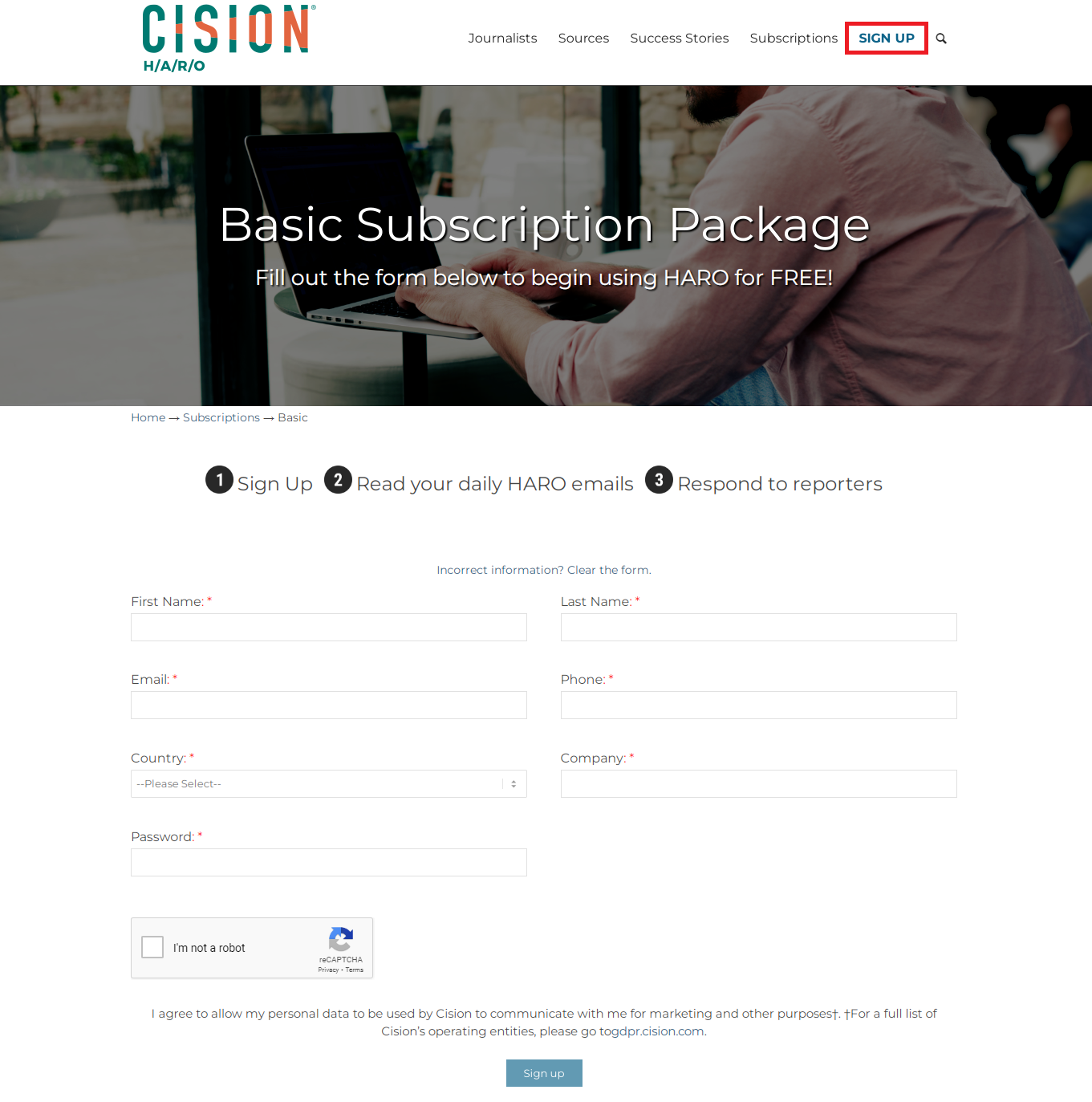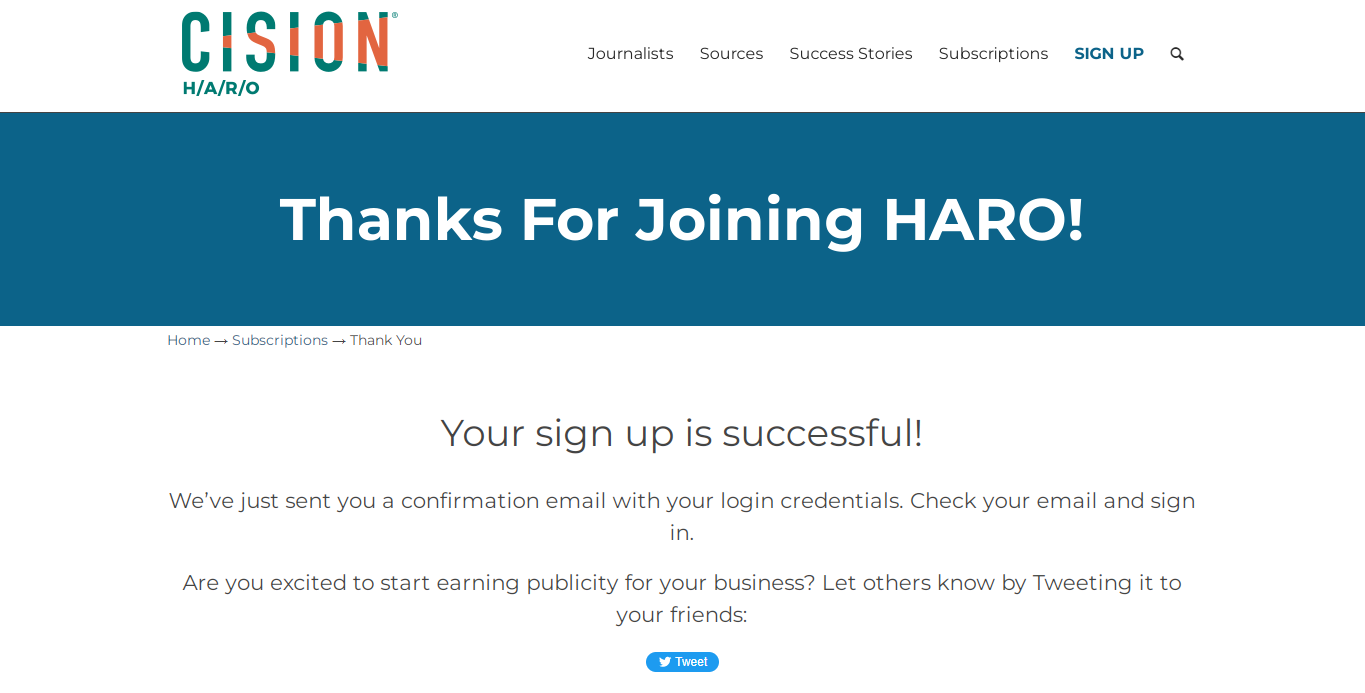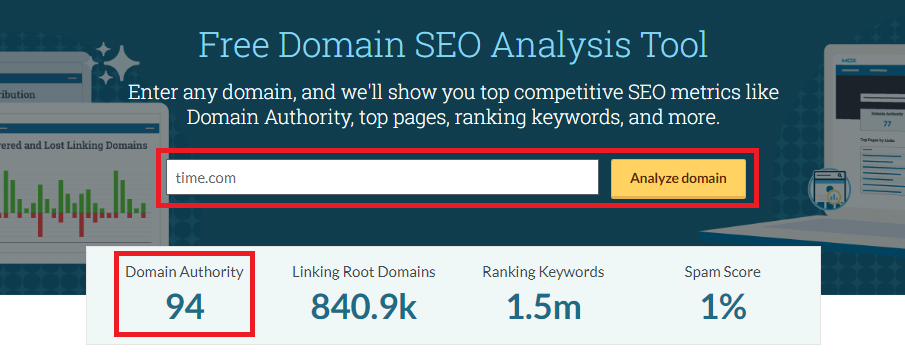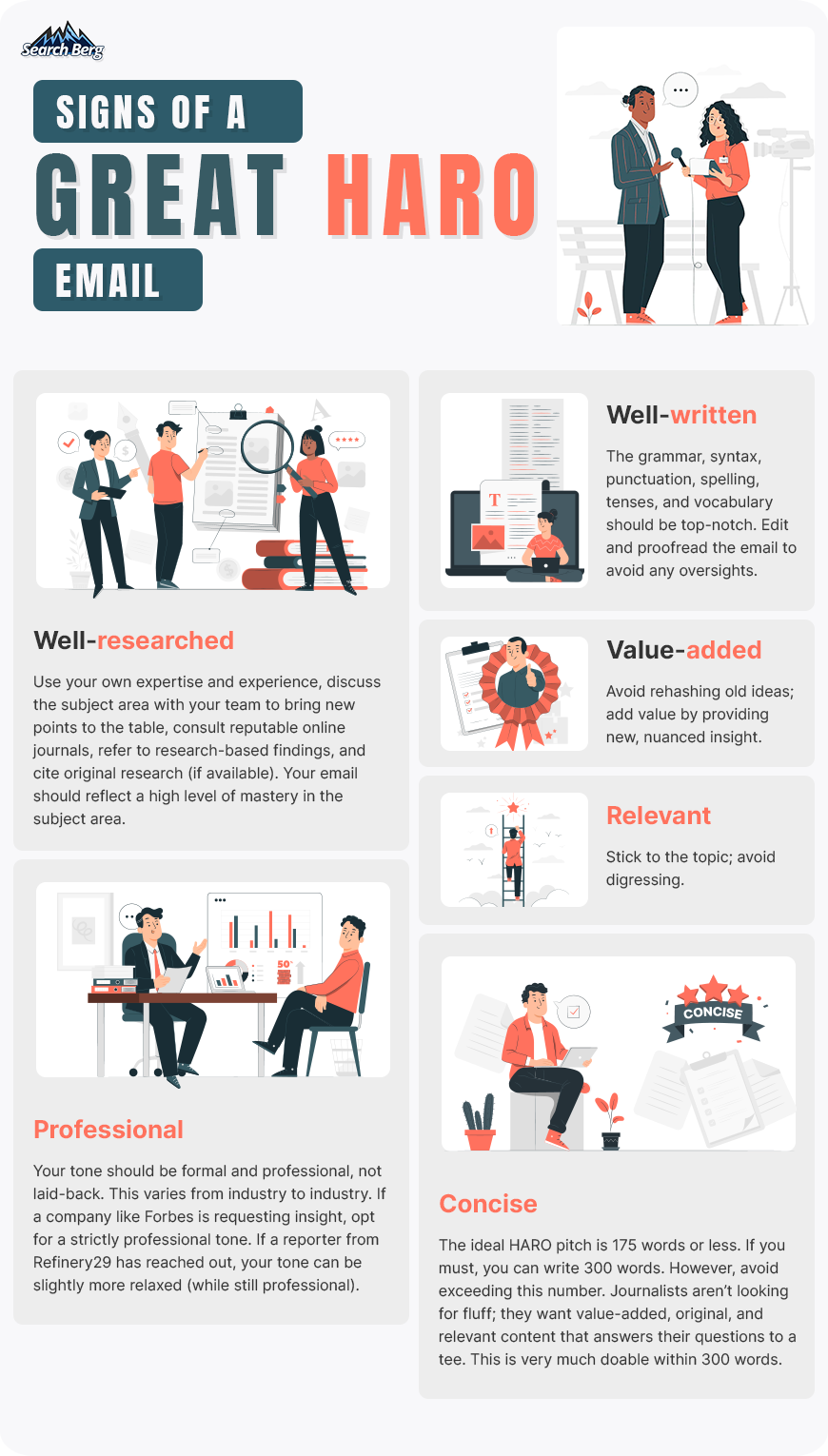What is HARO and How to Use It for Backlinks
Link building quality is way more important than quantity.
A handful of high-DA backlinks will give you a generous traffic boost, while dozens of weak backlinks will do little to nothing for your SERP position.
Stepping into 2023, quality is more important than ever for SEO efforts. A focused, no-nonsense, quality-centric approach to link building will help your rankings shape up.
We’re here to help you do just that!
HARO (help a reporter out) is a brilliant way to earn high-authority backlinks that actually make a difference to your ranking.
This approach yields impressive results and helps small businesses earn a high ROI.
Great rankings, sweet sales, a steady stream of revenue, and long-term growth.
Sounds like a plan?
Let’s break it down!
In this blog, we’ll walk you through the A–Z of HARO link building.
- What is it?
- Why does it matter?
- How effective is it?
- How can you use HARO for backlinks?
Stay with us for ten minutes to learn the ropes.
Let’s begin!
HARO Link Building: The Basics
HARO (help a reporter out) is a free service that operates on the logic of pitching.
As the name suggests, you’re quite literally helping a reporter out.
Here’s how it works.
Information-seeking reporters from well-known platforms request expert insight from niche-based bloggers.
What kind of platforms?
The big leagues:

They send requests via emails.
Bloggers, in turn, respond to these requests with pitches.
Since the platform is wildly popular, each request gets dozens (sometimes even hundreds) of pitches.
If a reporter likes your pitch, they’ll use your insight and offer a backlink in return.
This is an excellent way to earn high-quality backlinks from established, authoritative, reputable, and trustworthy publications.
As their visitors flock to your site, your traffic will increase substantially, your rankings will improve, and your sales will start snowballing.
HARO link building isn’t just another SEO technique; it’s a powerful, research-backed strategy that yields impressive results.
You’re not taking any risks.
You know exactly which platform is requesting information.
As you create a powerful pitch and get selected, you’ll earn a guaranteed backlink.
Predictable, quality-focused, and reliable, this strategy is a game-changer for small businesses that are tired of hit-and-miss link building techniques.
How to Use HARO for Backlinks
1. Sign Up
HARO allows both journalists and sources to sign up.
The big leagues sign up as journalists, while small businesses and bloggers sign up as sources.
Before you begin, click on the “I’m a Source” tab.

You’ll be redirected to the “Rules for Sources” page.
Carefully read this to ensure that you understand what HARO requires of you and comply accordingly.
The HARO editorial team is particularly strict.
If you violate the rules, appropriate action will be taken against you.
Here are the most important points to remember:
- Sources receive three emails a day. The emails are sent from Monday to Friday at 5:35 a.m., 12:35 p.m. and 5:35 p.m. EST.
- Sources must answer reporters directly through the anonymous @helpareporter.net email address provided with the source request.
- As a source, you musthave expertise and experience in the particular topic you are responding to. If you are not a subject matter expert, do not respond to the request. HARO takes strict action against sources that frequently pitch outside their area of expertise.
- Plagiarism will get you banned. Send unique responses to each request. Even if two requests are very similar, avoid using the same pitch for both. All information should be unique and value-added.
- Never spam reporters with off-topic pitches that aren’t relevant to the request at hand.
- Never pitch products/services in the source request unless the journalist asks for it.
- Provide accurate, complete, and updated information to journalists. Your contact bio and information should be correct, with no exaggeration, lies, or omissions.
- Do not add attachments to your replies to journalists.
Once you’ve read all the rules, it’s time to sign up.
Click on the “Sign Up” tab and start filling out the information.

Sign-up is pretty simple.
Once you’ve entered all the required information, you’ll be redirected to this page:

It’s all systems go!
2. Log In
Verify your email and log in.

Now the real work begins!
3. Understand Domain Authority (DA)
Before you get ready for all the heavy lifting, make sure you understand domain authority. This will help you figure out which backlinks are worth it.
The domain authority (DA) score measures how well a site ranks on Google SERPs.
The score ranges from 1–100; the higher, the better.
There are many different DA calculators out there. However, make sure you use Moz’s domain SEO analysis tool. As the brainchild of this system, Moz provides a complete domain analysis.
Here’s how this works.
Let’s say you want to check TIME’s DA score.
Enter the URL in the box and hit “Analyze Domain.”

A 94 DA ranking is ridiculously impressive.
This shows that TIME generates a lot of traffic, consistently ranks high on Google SERPs, and earns plenty of clicks.
If they offer you a backlink, you’ll get to piggyback off of their success.
Pretty impressive, right?
If a platform has a low DA score, they’re not authoritative, trustworthy, and reputable.
Their rankings will not be nearly as impressive as an industry giant like TIME, nor will their traffic be worth the pitch.
Sit down with your marketing team and determine the right cutoff DA score for your business.
This will depend on your own experience, expertise, credibility, and reach.
If you recently launched a startup, you shouldn’t have a high cutoff score.
Up-and-coming small businesses and startups should opt for a cutoff limit of 60.
Increase this as your business grows.
This doesn’t mean that you shouldn’t shoot for the stars!
Send pitches to businesses with 90+ DA scores.
However, keep in mind that they’re less likely to accept a pitch from a business that’s just starting.
If two sources provide brilliant insight, reporters will go with the one that’s been around for longer and has more of a following.
You’ll have to work your way upwards.
And there’s no hard-and-fast rule.
In many cases, reporters end up selecting pitches from fledgling businesses because their content is simply spectacular.
Quality always comes first; keep this in mind.
However, the competition is at an all-time high, which means that dozens of other sources are spending spectacular pitches.
The more industry experience and expertise you have, the better your pitches.
Improve your industry knowledge, market know-how, and consumer insight to make pitches that stand out and steal the show.
4. Make a Pitch
It’s show time!
As you start working on a pitch, remember that bigger platforms receive the most responses.
We’re talking hundreds or possibly even thousands of pitches.
We’re at risk of sounding like a broken record, but the significance of quality must be reiterated.
If you send mediocre pitches, you’ll waste your time and energy.
Reporters select the best pitches, the cream of the crop.
Make sure your pitch makes the cut.
Avoid sending a short, curt email that sounds like it was copy pasted.
Instead, prioritize thoughtfulness and personalization.
Humanize your email. You’re not talking to a company. You’re talking to people behind the company.
Let’s say a reporter from Forbes is looking for insight into the future of video marketing.
They want sources to explain different video styles and discuss the best way to make video content stand out.
They also want insight into the importance of video optimization.
Every query has a bunch of questions. The first thing you need to do is break the query down into segments.
In this case, we’ve created the following segments:
- The future of video marketing
- Video styles
- How to make video content stand out
- Video optimization
Instead of sending big bulks of paragraphs that collectively address these points, break things down one by one.
Start with a brief introduction.
Sequentially cover each bullet point.
Use this guide:

- Well-researched: Use your own expertise and experience, discuss the subject area with your team to bring new points to the table, consult reputable online journals, refer to research-based findings, and cite original research (if available). Your email should reflect a high level of mastery in the subject area.
- Well-written: The grammar, syntax, punctuation, spelling, tenses, and vocabulary should be top-notch. Edit and proofread the email to avoid any oversights.
- Value-added: Avoid rehashing old ideas; add value by providing new, nuanced insight.
- Relevant: Stick to the topic; avoid digressing.
- Professional: Your tone should be formal and professional, not laid-back. This varies from industry to industry. If a company like Forbes is requesting insight, opt for a strictly professional tone. If a reporter from Refinery29 has reached out, your tone can be slightly more relaxed (while still professional).
- Concise: The ideal HARO pitch is 175 words or less. If you must, you can write 300 words. However, avoid exceeding this number. Journalists aren’t looking for fluff; they want value-added, original, and relevant content that answers their questions to a tee. This is very much doable within 300 words.
Make sure you add your bio towards the end of the email and hyperlink your company’s name. Here’s an example:
Author’s Bio: Aaron Tyler is an SEO specialist at Global-marketing Inc., an award-winning online marketing agency. The company specializes in SEO, paid marketing, content marketing, website design and development, social media marketing, and reputation management.
5. Wait for the Magic to Happen!
Once you’ve made your pitch, it’s time to wait it out.
If your pitch is successful, the reporter’s assistant will reach out to you and confirm that you will be used as a source.
Once the article is live, you will be notified.
It can take anywhere between a few days to several weeks for the content to be published.
This is because most reporters reach out to sources during the initial content research process.
At this stage, the content has not been written; it is being planned, researched, and structured.
In rare cases, it may take several months before you hear back.
However, this only happens when the content is comprehensive and relies on a research paper or study.
Once the article is published, your business will earn a backlink.
Cue the celebratory dance!
Recommended Read: 10 Types of Backlinks and How to Create Them
Your HARO Game Plan
HARO is home to 75,000 journalists and 1 million sources.
Yes, 1 million sources.
You’re one of 1 million niche experts trying to earn high-DA backlinks from industry giants.
If you don’t use the right game plan, your efforts will be futile.
Follow these tricks to stand out from the crowd and succeed with HARO link building:
1. Respond Quickly
The faster you respond to a HARO query, the better.
This means your pitch will appear right at the top of the journalist’s feed.
If you wait for too long, say, 24 hours, dozens of other pitches will appear before yours.
Journalists are less likely to scroll all the way down.
If they find a great pitch within the first few options, they’ll go with that.
Think of it like Google SERPs.
When web users run queries, they rarely scroll past the first page.
The final pick is made between the first few search results.
Now, you can’t possibly scan the site 24/7.
Ensure that 2–3 in-house members keep a close eye on the queries.
Every time something relevant pops up from a high-DA reporter, they should alert you right away.
Work on the pitch and send it without haste.
Prompt responses will go a long, long way in helping you become a HARO maestro who earns high-quality backlinks in abundance.
2. Don’t Sound Too Salesy
Quite a few journalists end up losing their chance despite being qualified to provide excellent insight.
They check all the boxes off the list but still get rejected.
Why?
Because their emails are too salesy.
This isn’t the time or the place to start promoting your social media pages, dropping links to every webpage on your site, and mentioning all of your accomplishments and contributions.
You’d much rather not send an email, to begin with; this is how much reporters hate salesy pitches.
Focus on the topic, not your business.
You’re providing industry expertise, not advertising your brand.
A modest, quality-driven pitch will ultimately help you succeed.
3. Find Relevant Reporters and Queries
If you hastily and haphazardly use HARO, you’ll end up wasting your time.
Strategic use will help you achieve the intended outcome and have a productive experience.
Scan and filter your emails based on your areas of expertise.
If you provide SEO services, filter your inbox for content marketing emails, social media marketing emails, paid marketing emails, and the like.
You should also have a list of reporters who are relevant to your industry.
If they’re looking for a source, ensure you don’t let that opportunity go to waste.
Stay on top of your game.
The more proactive you are, the better.
4. Write an Engaging Headline
Your headline should grab attention, but not for the wrong reasons.
Work with your team to brainstorm engaging, relevant, and professional headlines that make a great impression on reporters.
A dash of creativity will go a long way in making your pitch stand out.
As we’ve said before, make sure you don’t sound salesy.
There’s a fine line between creative and cheesy content; make sure you’re wary of the demarcation.
5. Don’t Hesitate to Go Against the Grain
We’ve noticed a common trend on HARO.
When reporters request insight, most sources use pretty much the same angle.
Sure, they may provide original content.
However, the standpoint is generally the same, even if the topic is controversial.
You don’t necessarily have to do this.
Reporters are looking for honest, smart insight, even if it’s unorthodox.
Think critically and logically.
If you have to provide an opinion that goes against the grain, do it.
It’s Time to Fire Up the HARO Arsenal
HARO link building isn’t a well-kept secret anymore; it’s becoming more and more mainstream every day.
As more reporters and sources jump on the bandwagon, the HARO community is growing and becoming more productive.
Reporters get expert advice from professionals, while the sources enjoy high-DA backlinks. It’s a win-win situation!
At Global-marketing Inc., we’re ready to fire up the HARO arsenal!
In this blog, we helped you understand how to use HARO for backlinks. Now it’s time to put our plans into practice.
Explore our classic link building services and PR link building plans to get started.
We specialize in HARO management; our team will set up a page, find the most relevant opportunities, send excellent pitches, and fetch powerful backlinks for your business.
We’re ready when you are!












